The second house in this article is also located in Jayanagar near Madhavan Park. The house was built in two stages – the ground floor construction was completed in the year 1958 and the first floor construction was finished in the year 1962. The house was built by Y Hanumappa Reddy. The owner’s ancestors were initially settled in a village near Hindustan Aeronautics Limited (HAL) airport.
The site and house construction was completed under the low income housing scheme of Karnataka Housing Board during the year 1957 – 58. The ownership transfer was completed in the year 1977. The walls of the house is constructed using lime and plaster.
When the ground was dug up for laying the foundation of the house, skulls were found suggesting that the place was used earlier as a burial ground for the neighbouring villages of Byrasandra, Kankanapalya and Siddhapura. However, they haven’t faced any haunting experiences.
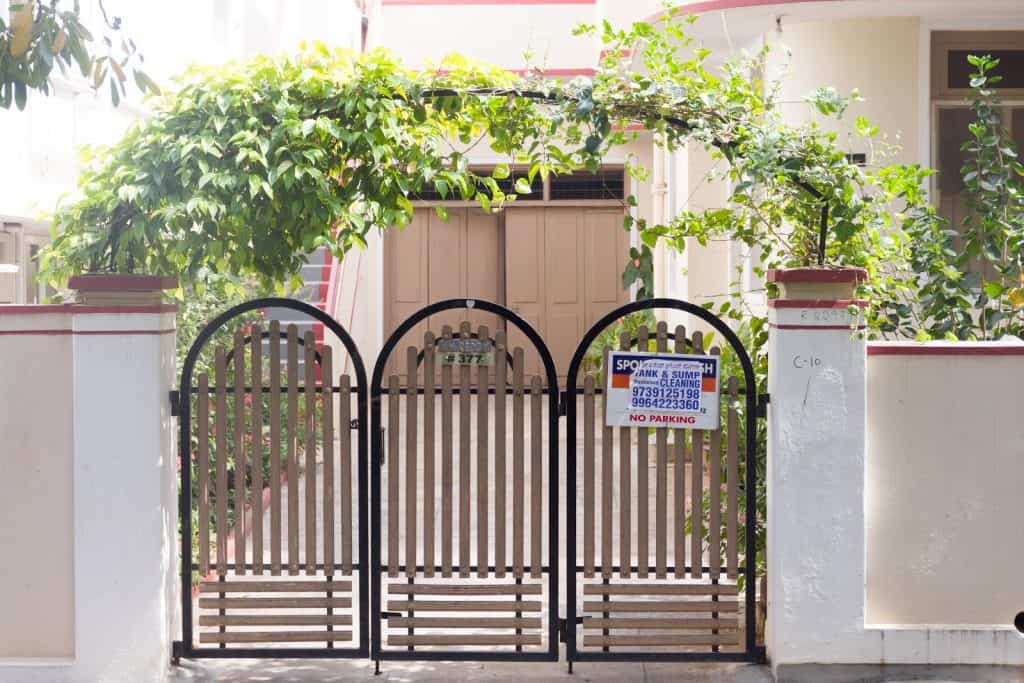
This gate was changed recently – the original design was a completely wooden gate. The piers on either side of the gate are typical Art Deco.
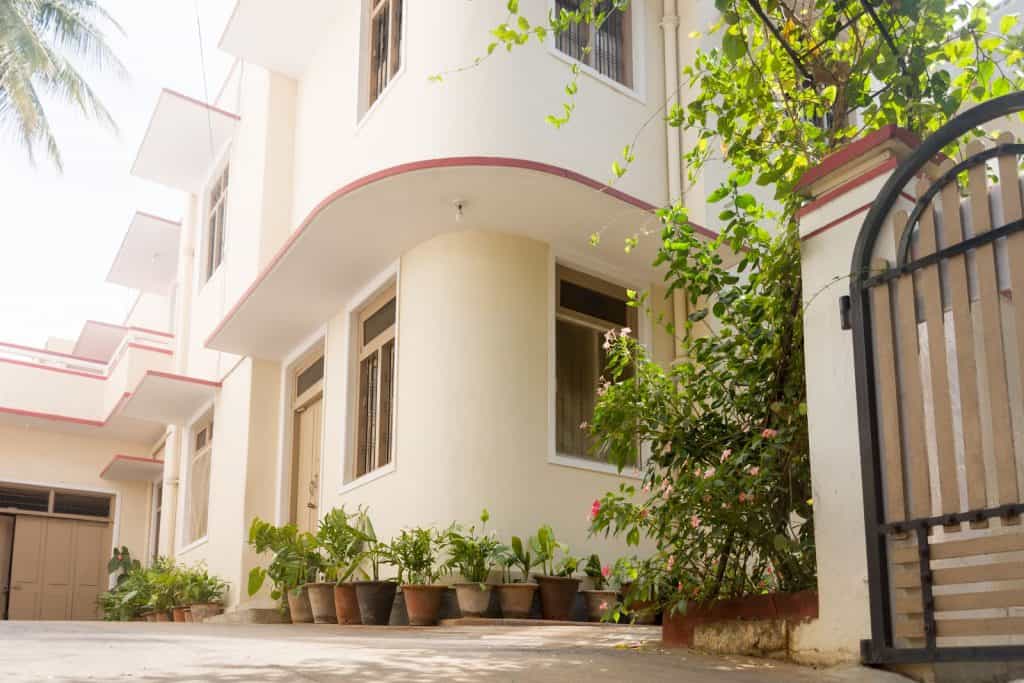
The front elevation of the house – notice a similar streamlined appearance, like House 1, also the thin continuous chajjas and curved corners – so again Art Deco influenced.
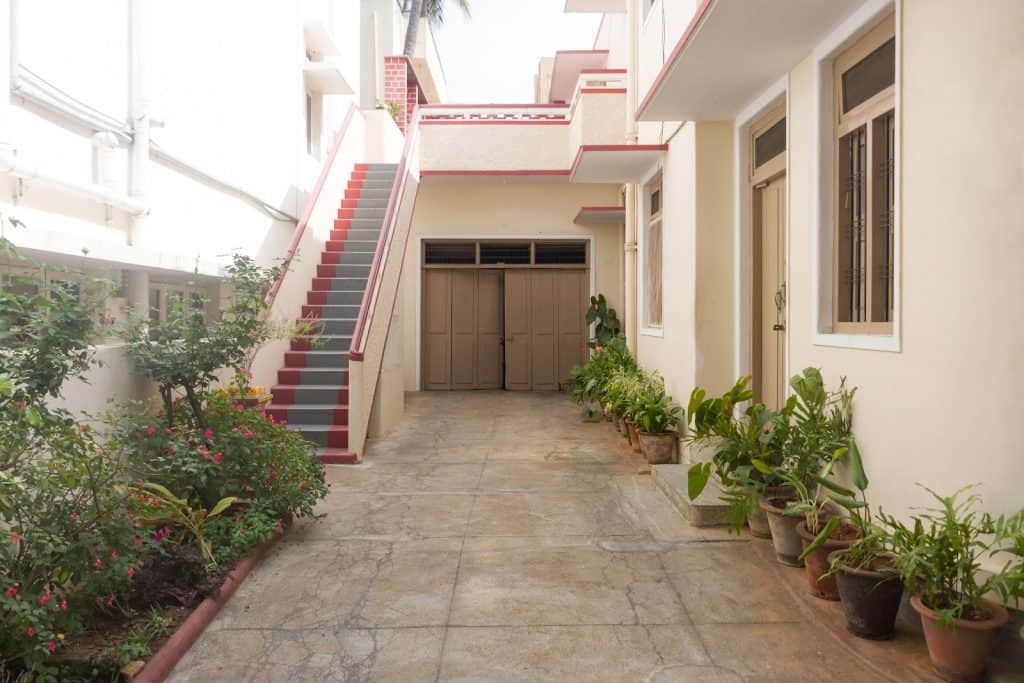
A view from the gate looking towards the garage and door to the right leading inside.

One of the windows – notice the raised window surrounds or moulding – executed in masonry – again a typical feature. So too the partly glazed and partly wooden panelled shutters
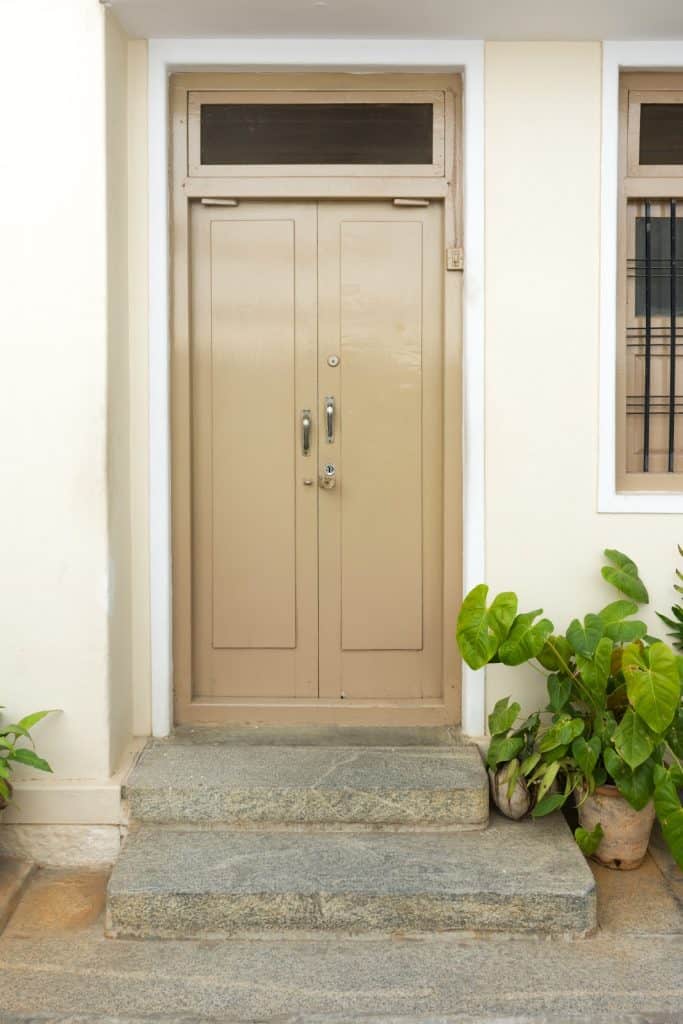
Ground floor main door – again notice the surrounds executed in masonry and the granite steps and the double leaved door.

These set of interior doors have a story of their own. The interesting design on the door leaves is the result of an error. An incorrect varnish was applied to the doors which started to shrink and crack as it dried. This resulted in the broken pattern which the owners decided to retain as a one of its kind design.

Another piece of family history – The image above can be easily mistaken for a door with wallpaper on it. But in reality it is a saree which has been laminated between two glass panes. This saree was given as a gift by the owner to his daughter, somewhere towards the end of 1959 and start of 1960 when he was returning from England. As the saree tore, it was decided to preserve it in this manner – on the shutter to the meter box.
The first floor was constructed in 1962 with funds received from government towards land acquisition for the old airport expansion. The garage was built during this time. Prior to this, there was a vacant space all around the house. The exterior cement flooring was done at the same time.

Front door of the first floor and masonry parapet with a geometric motif – reminiscent of the machine age
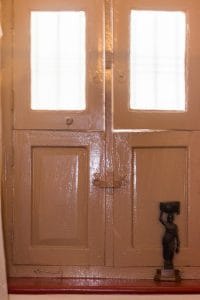
The windows – notice the wooden stops used to keep the shutters closed / open
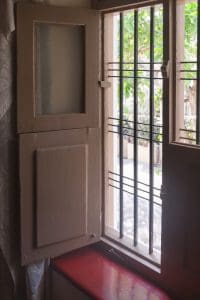
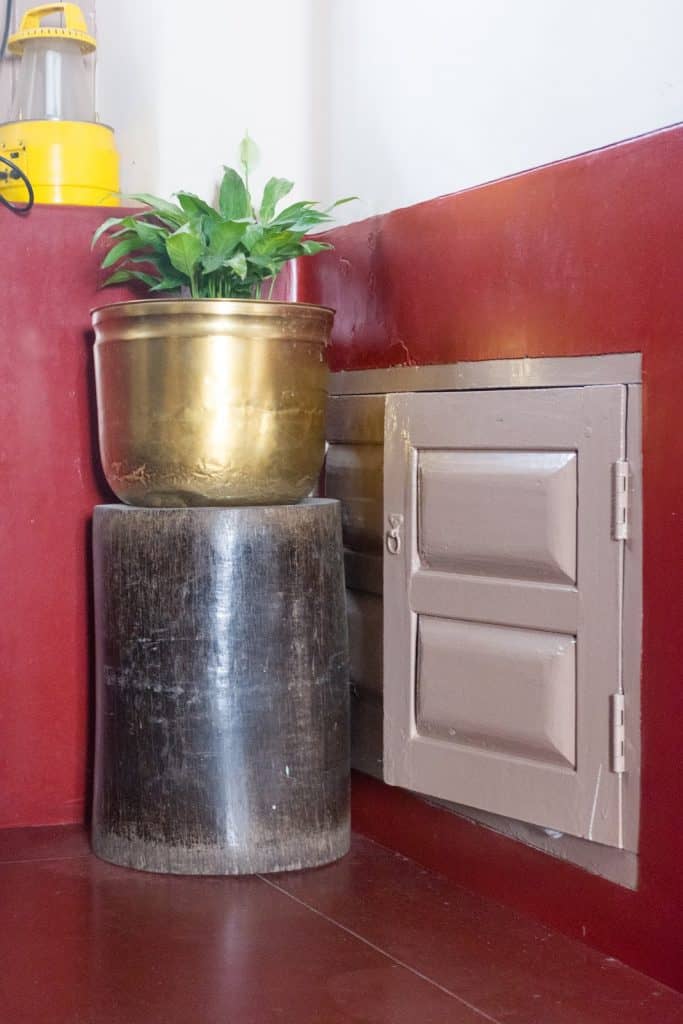
Here we see a brass pot which is placed on a section of a Bhagini (Caryota urens) tree trunk. Note the built in storage and chamfered wooden panelled shutters
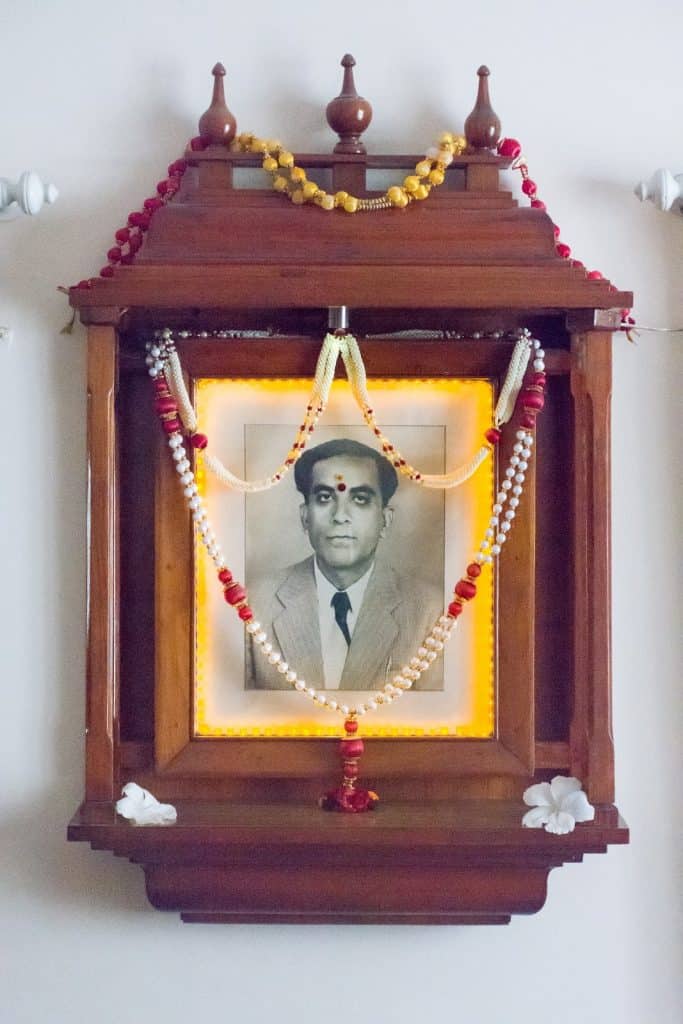
Portrait of Mr. Y Hanumappa Reddy, the owner

Stools fashioned out of the feet of a dead elephant – thankfully! more common in 19th century homes
This stools were typically designed out of legs of a dead elephant. Once the elephant had died, its legs were harvested and all the flesh inside the leg was removed and reinforced with wood as seen in the image below. These stools were gifted to the owner by his son-in-law who was a forest officer.
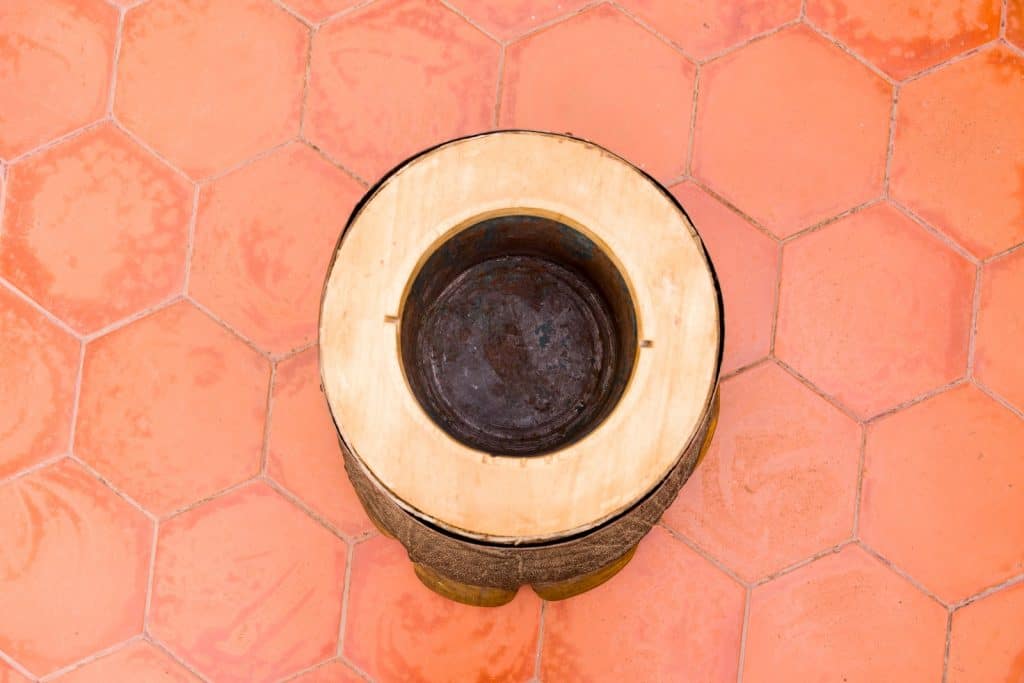

A picture of the kitchen. Notice the masonry chimney. The tiles were added at a later date. The stove is a limited edition model from BPL.
Go to Page 3 for the House 3